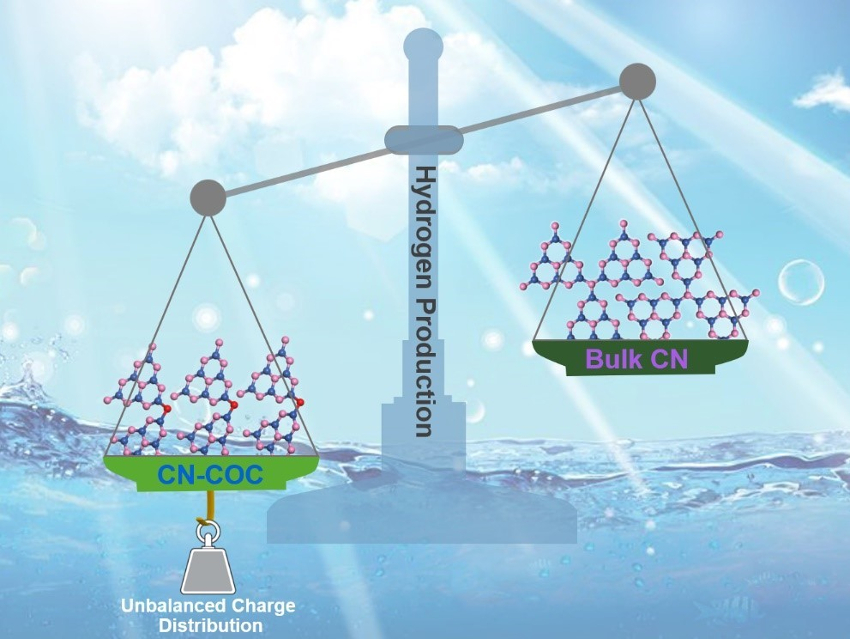Photocatalytic H2 evolution from water can be used to convert solar energy to chemical energy. This process requires highly efficient photocatalysts. One promising photocatalyst for this type of application is polymeric carbon nitride (CN). However, the rapid recombination of photoinduced charge carriers and the weak absorption of visible light still hamper the photocatalytic performance of polymeric CN. Surface functionalization could be used to improve the photocatalytic activity.
Rongzhi Chen, University of the Chinese Academy of Sciences, Beijing, Xinming Wang, Guangzhou Institute of Geochemistry, Chinese Academy of Sciences, and colleagues have developed a strategy to tune the chemical composition of the surface of polymeric CN to achieve a more effective charge separation. Thermal treatment of the material, first under an H2 and then under an air atmosphere, changed the oxygen species linker on the surface of CN from −C=O to N=C−OH and finally to −C−O−C−. This transformation was confirmed using X‐ray photoelectron spectroscopy (XPS).
This change in the surface composition changes the charge distribution and significantly enhances charge separation: the electrons are more prone to transfer from the polymeric CN skeleton to the surface oxygen species. This contributes to an improved hydrogen-production performance. The resulting photocatalyst achieves a high photocatalytic hydrogen production rate of approximately 10225 μmol h−1 g−1 under visible light irradiation and a high apparent quantum efficiency (AQE) of 5.7 % at 430 nm.
- Tuning Oxygen Species Linker of Polymeric Carbon Nitride Surface to Promote Photocatalytic Hydrogen Evolution Performance,
Qin Lei, Rongzhi Chen, Yurong Zhao, Huanyu Chen, Xinxin Long, Jihua Tan, Xinming Wang,
ChemSusChem 2020.
https://doi.org/10.1002/cssc.202001027




